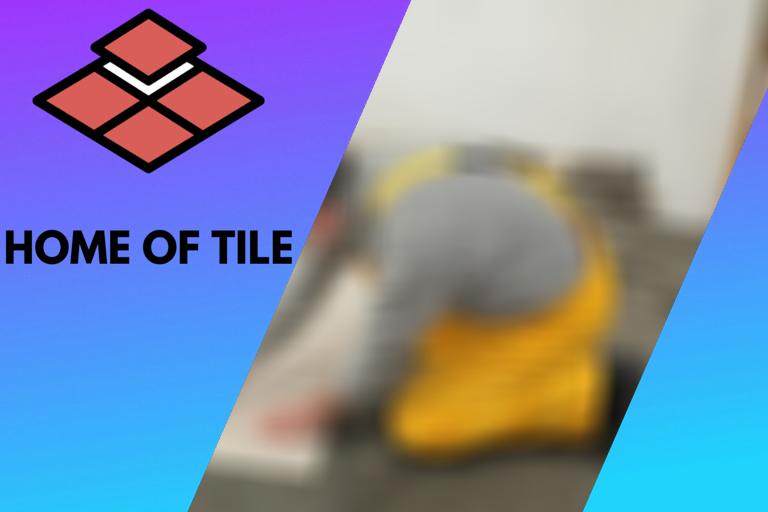Priming before tiling: 10 things you should know
When it comes to the integrity of tiling, the only way to make tiles last longer is by ensuring the proper water-resistance treatment. Water and moisture are the arch enemies of tiles, mortar, and grouting. If the water from the walls or the floor on which the tiles are installed reaches the adhesive, then the integrity of the tiles will be compromised.
For making the backboard surfaces water-resistant, many precautions can be practiced, and there are many water sealant products that you can use. Apart from shielding products, the most used one people rely on is primer.

Primer ensures water resistance and makes the adhesion of tiles to the adhesive powerful, therefore increasing the integrity of the wall and help tiles last longer. There can be many questions regarding priming, like what kind of primer to use or are all surfaces suitable for priming. I would say take a deep breath and relax because after reading through this article, you can take a pop quiz on priming and put your opponents to shame.
Contents
- 1 Do I need to prime plywood before tiling? Some helpful tips:
- 2 Acrylic primer for tiling, some helpful tips:
- 3 Do I need to prime plasterboard before tiling? Some helpful tips:
- 4 Do I need to prime the self-leveling compound before tiling? Some helpful tips:
- 5 Do I need to use a primer before tiling? Some helpful tips:
- 6 Plaster primer for tiling, some helpful tips:
- 7 Plywood primer, some helpful tips:
- 8 Prime joint compound before tiling, some helpful tips:
- 9 Prime wall before tiling, some helpful tips:
- 10 SBR before tiling, some helpful tips:
Do I need to prime plywood before tiling? Some helpful tips:
In general, if the subfloor for tiling is made up of plywood, you don’t have to use a primer. Instead, the plywood preparation is done so that it is made water-resistant and more adhesive suitable without using a primer.
● Preparing the plywood floor
- Free from deflection and bending: Ensure that the plywood is free of any excessive deflection and bending because this can pop grout joints and loosen or crack tiles.
- Ensuring the thickness of the subfloor: Make sure that the plywood subfloor is an inch and a quarter thick. Any thickness less than that is not recommended by the tiling industry.
- Laying out the tiles: Layout the tiles on the floor across the room in both directions using spacers for the grout joints so that you can plan the tiling process. Avoid tiles of different widths on both sides of the room. Make tiling as symmetrical as possible.
- Applying the adhesive: Next, apply a thin coat of adhesive on the subfloor using a straight trowel.
- Laying fiberglass paper mats: After applying adhesive, place the fiberglass reinforced paper mats or thin skins all across the floor.
- Applying mortar: Mix and apply a thin skin coat of mortar to the fiberglass mats. This mortar acts as the primer that creates a cement surface to which the tile can bond perfectly.
These are the steps taken to prepare the plywood floor for tiling because primers are just not enough for them.
Acrylic primer for tiling, some helpful tips:
In general, Acrylic primers are oil-based primers that are preferred over regular primers if the surface is rough. The use of acrylic primers can provide a smooth surface to work with.
Acrylic Primer penetrates the concrete, cement plaster, or masonry. It saturates the host substrate to form a hydrophobic barrier that cures with the influence of atmospheric humidity and condenses to a tack-free film. Stones, bricks, and masonry treated with Acrylic Primer will act repulsive to water.
● Surface preparation
Before applying the acrylic primer, make sure that the surface must be sound, clean, dry, free from dust, oil, grease, laitance, etc. All traces of release agents must be removed. On chalky and dusty surfaces, all loose material must be removed by stiff bristle brushing.
Also, make sure that while applying the primer, the surface temperature should be a minimum of 50 °F (10°C) and a minimum of 37 °F (3°C) above the dew point of the air, temperature, and relative humidity measured in the vicinity of the surface.
After applying the acrylic primer, ensure that the surrounded area is adequately ventilated. The primer can fully penetrate the base surface and dry out properly to give a nice smooth, finished surface for tiling.
Do I need to prime plasterboard before tiling? Some helpful tips:
In general, priming the plasterboard joints, cracks, and uneven seams can help you seal the backboard appropriately. And hence keep the moisture out of the tiles, grout, adhesive, and base mortar.
Plasterboards are a nice alternative to cement boards. Although cement boards are preferred over plasterboards, they sure can perform good backboards for tiling. Plasterboards are attached to the walls just like cement boards, and there are also joints present in between adjacent boards.
These joints are first covered by special backboard tape, and then the mortar is applied to the joints to seal them off. After the mortar is dried, the entire plasterboard wall and patched joints are primed so that the adhesive can easily stick to the wall and make a strong bond.
Do I need to prime the self-leveling compound before tiling? Some helpful tips:
In general, it is recommended to prime the floor before starting to lay tile. The self-leveling compound is a polymer-modified cement with high flow characteristics and gets settled across the floor due to gravity.
Like any other surface, you have to make sure that the self-leveling compound surface is smoothed correctly out and is totally leveled to make sure the tiles applied on them are not bent. Otherwise, the grout can be cracked, and tiles can get loose.
After ensuring that the surface is clean and seamless, you can start water-resistant treatment on the floor. You can apply primer on the self-leveling floor before you spread the adhesive to make a strong bond with the floor.
Do I need to use a primer before tiling? Some helpful tips:
In general, priming the surface before tiling is not always necessary. Some surfaces require priming for proper adhesion of the tiles, while others bond with tile adhesives just fine, even without primers. Before you decide whether to use a primer or not, look at the tile’s manufacturer’s guidelines and your surface for logical decision.
As discussed, some tiles need preparation prior to tiling, but not all of them. Wood floated surfaces are surfaces with rough or porous textures, do not need primers so that tiles can adhere to them properly. They have natural pores, and adhesives saturate into these pores to ensure a strong bond with tiles.
But if you are working with power floated surfaces, which are smooth and dense surfaces, and using ceramic, porcelain tiles, or installing natural stones, then the use of primer is a must. Otherwise, the tiles will not adhere to the walls or floor surface.
Plaster primer for tiling, some helpful tips:
In general, before applying primer plaster to the surface, make sure that the surface has been cleaned of any dust particles. If you are using it on exterior walls or floor, especially those that face or surround the lawn or backyard, then make sure to remove any foreign material like fungus or algae that may be present on the surface.
Plaster primer is a solvent-based primer for gypsum and masonry surfaces. If you are using plaster boards as backboards for tiling or your tiling surfaces are power floated surfaces, you can use plaster primer for tiling.
Primer plasters can be used in interior and exterior projects. They can be applied on dry and porous surfaces. Plaster primers tend to penetrate deep between the substrates and cause excellent adhesion of tiles to the backboards.
Plywood primer, some helpful tips:
In general, primers should not be used on plywood for tiling. But there are some primers that can help protect the wood and make sure that adhesive binds strongly to the plywood. These can be applied to the plywood before you spread adhesive.
We have discussed earlier in this article how you can prepare your plywood surface for tiling. You have to apply adhesive to the plywood during that process on which the fiberglass paper mats are placed (you can read the entire process in the “Do I need to prime plywood before tiling?” section).
An extra precaution you can take before tiling the plywood surfaces is to use water-based plywood primers before spreading the adhesive on the plywood. This will protect your plywood from molds and will also help with adhesion.
Preparing plywood for priming, some helpful tips:
Like any other surface, before you apply primer, you have to check certain chores to make priming easy and efficient:
- Sanding the rough edges: Using 180-grit sandpaper, sand down the rough edges of the plywood surface to make it as smooth as possible.
- Cleaning the debris: Soak a cloth in clear water and wipe any dust or debris off the plywood surface.
- Applying the primer: To apply the primer, use can either use a paint brush or a paint sprayer. If you use a paint sprayer, it is recommended to use a 1.8 to 2.0 fluid tip with 2 bar pressure.
- Letting it dry: drying process depends entirely on room temperature, but under average temperature conditions, you can start recoating the surface after 10 minutes if sprayed or after 15 minutes if applied with a brush.
- Final sanding: After the surface is fully dried and you are ready to spread the adhesive, make sure that for one last time, you sand down the plywood surface using 320-grit sandpaper. After that, you continue with the rest of the tiling process.
Prime joint compound before tiling, some helpful tips:
In general, priming the joint compound or any other fillings is needed if these surfaces are not primed. In that case, there is a good chance that these areas will develop molds that can cause moisture to spread throughout the wall.
The joint compound or drywall compound is a mortar-like paste applied to the joints between adjacent drywall sheets. These joints are first sealed using joint fiber tape. A mixture of joint compound is spread on them evenly, making sure that the level of the wall is not disturbed. Once dried, the primer is applied to the joint compound patches to tile these areas properly.
Prime wall before tiling, some helpful tips:
In general, priming the wall or not depends purely on surface material and condition, no matter the type of tile you are using. In most cases, a suitable primer is applied to the walls as priming takes just a few hours. It is an extra precaution to protect your wall.
Depending on different types of walls, here are few measures to take before you apply the primer:
- Filling out the holes: Most old cement and plaster walls may have some cracks and holes in them, so you must fill those cracks with fresh plaster or mortar then apply the primer on the entire wall.
- Applying a thin coat of plaster: If there are too many cracks on the wall, instead of filling out, they apply a new, fresh thin coat of plaster over the old one.
- Scrapping the old plaster: If the old plaster is loose or crumbling, you must scrap this off and replaster the entire wall.
- Painted walls treatment: Paints should be scrapped off the walls before you start tiling. After scrapping the old paint off, wash the entire wall with a soap solution and completely dry it. After following these steps, only then can you prime the previously painted wall.
SBR before tiling, some helpful tips:
In general, SBR is a good alternative to PVA. Both products are good sealing and bonding agents that provide water resistance. PVA should never be used on the wall before tiling. Instead, use SBR for water resistance.
There are many technical and chemistry-related terms to explain why you should not use PVA, but the simplest reason is that PVA never “SETS.” PVA chemical composition is such that even a small amount of moisture from the air can reactivate the settled PVA and make it wet again.
Even on a dried-out PVA coating, the PVA unsettles again and starts to run down the wall when the liquid adhesive is applied. SBR, on the other hand, is a good replacement for PVA and is a good sealing and bonding agent.







